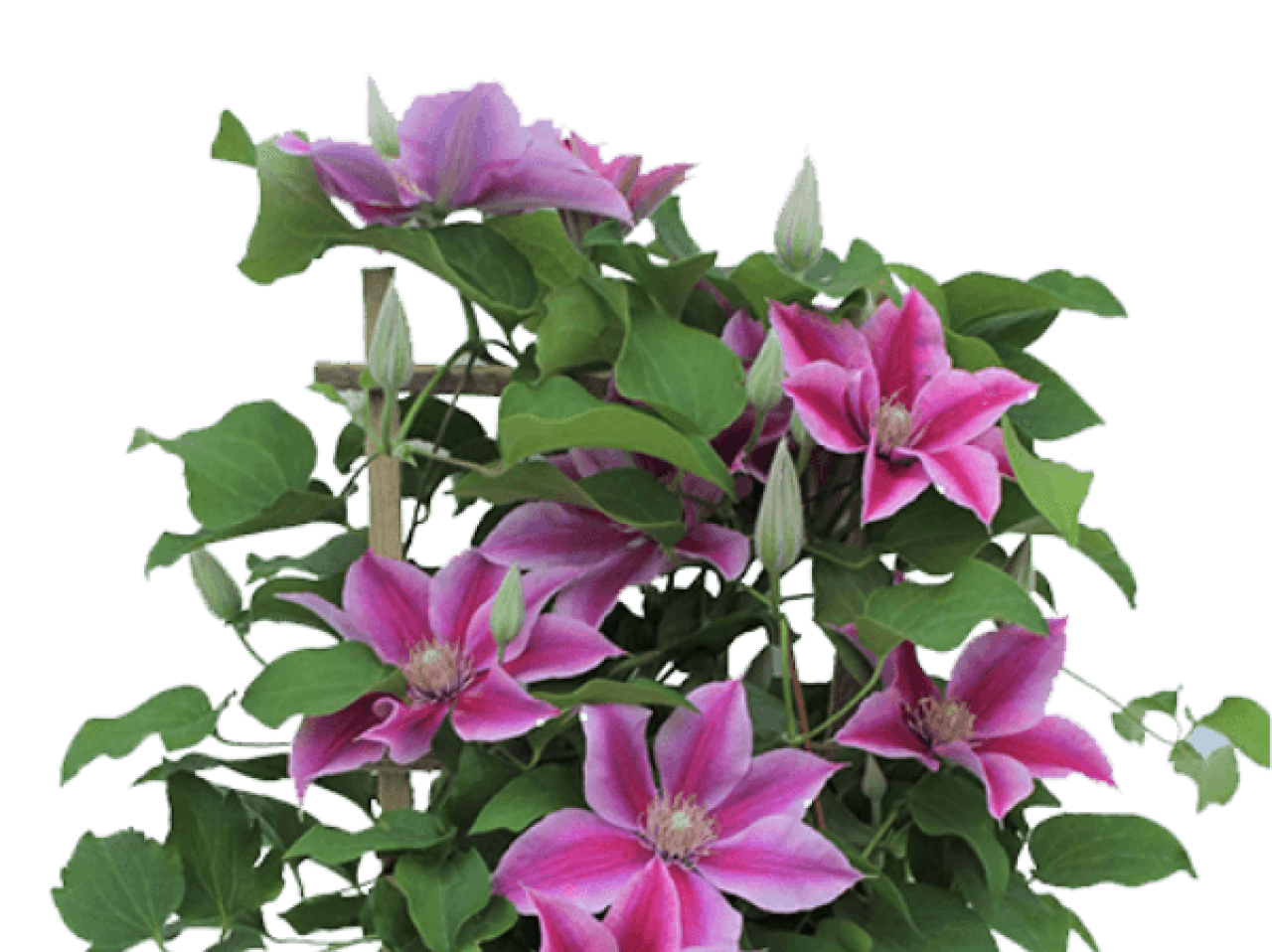How to Care for Clematis
Download the PDF version
Clematis care
Clematis plants are among the most popular and attractive flowering vines grown in the home landscape. These plants include woody, deciduous vines as well as herbaceous and evergreen varieties. They also vary greatly among species, with different flowering forms, colours and blooming seasons, though most bloom between early spring and fall.
Where to plant
Hardy in zones 4-9, Clematis can be planted in full sun to partial shade. They are bred to have multiple flowering stages throughout the growing season and can be 3-5 ft. in height and width (with supporting trellis) at maturity.
Watering
Water clematis regularly, especially if grown in a container. They should be watered about an inch or so weekly, and more deeply during dry spells. Apply a 2-inch layer of mulch to keep the roots cool and moist, replenishing it each spring.
Support
Clematis vines must be supported in some fashion. The type of support system is usually dependent on the variety grown. For instance, poles are acceptable choices for smaller growing clematis vines, which can range from 2 to 5 feet in height. Arbours are more suitable for growing larger varieties, which can reach heights of 8 to 12 feet. Most varieties, however, do quite well growing along a trellis or fence.
When to plant
Although many clematis vines are grown in containers, they can also be planted in the garden. They are usually planted in fall or early spring, depending on the region and variety. Clematis plants need plenty of space for adequate air flow as well as a rich, well-draining planting area.
When planting, the hole should be large enough to accommodate the plant, and at least two feet deep. Amend the soil with compost prior to planting. It may also help to cut the plant back a bit before planting to lessen the shock as it adapts to its new environment.
When/how to prune
Early spring-blooming varieties should be pruned back as soon as possible after they bloom, but before July, as they bud on the previous season’s growth. Large-flowering types that bloom in mid-spring should be cut back to the topmost buds in late winter/early spring. Late-blooming varieties should be pruned back about two or three feet in late winter/early spring.